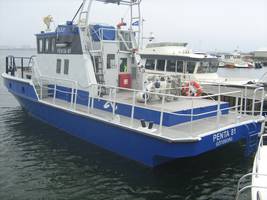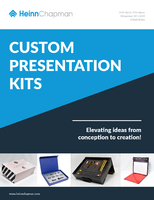Leading the Charge: ElectriCity Ferry Prototype Puts Volvo Penta to the Test

As part of Gothenburg’s ElectriCity project, Volvo Penta has partnered with ferry operator, Styrsöbolaget, to introduce electric propulsion to an existing ferry. Before this can become a reality, the company has fitted the electric technology into its own test boat and now begins a period of evaluation.
This ambitious plan is part of the pioneering ElectriCity project – a collaboration between industry, academia and local government. Aimed to be the model of future clean urban development, the electric-powered ferry will link both sides of the Göta Älv River.
The ferry – Älvsnabben 4 – will be converted into an electric propulsion vessel in collaboration with its operator, Styrsöbolaget and the Volvo Group. This refit is scheduled to begin in early 2020, but before then the electric propulsion system that will be used to replace the ferry’s diesel engine-powered marine driveline is being thoroughly evaluated in one of Volvo Penta’s own test boats.
The test vessel – known as PTA81 – may be slightly smaller than the ferry, but it has the same batteries, controllers and electric motors that will be used on the Älvsnabben 4. The technology being tested is not just applicable for ferry operations, it will be relevant for most marine electromobility applications, and has been proven elsewhere in the Volvo Group.
The conversion
PTA81 is one of a fleet of vessels berthed at Volvo Penta’s own testing marina – Krossholmen – giving the company a unique advantage when it comes to real-world development. The conversion of PTA81 has just been completed and took under four months, and now a period of on-the-water tests begins.
“The conversion itself went smoothly,” said Niklas Thulin, Director Electromobility, Volvo Penta, adding: “We are learning valuable lessons about designing battery rooms and new opportunities with weight distribution, which will give us the ability to better optimize the balance and ride quality of vessels.”
The ferry re-build
The plan is to start the conversion of the Älvsnabben 4 early next year, with the ambition of the ferry entering traffic at the end of 2020. While this is underway PTA81 will continue to be tested so that the technology is thoroughly understood and robust before the ferry goes into operation on a public route.
“This gives us time to validate the installation’s performance, noise and vibration levels, as well as its drivability,” explains Thulin. “For sure, the electric driveline will have different dynamics compared to a combustion engine. Our objective is to fine tune these to improve the experience, but not make it so different that the vessel’s crew need to be re-trained.”
Collaboration is key
When it comes to customer involvement Volvo Penta is always onboard. But engaging this early with customers is paramount when it comes to new technology.
The development of the PTA81 prototype has been a collaborative effort between Volvo Penta and the Volvo Group, with considerable sharing of technology. The Volvo Penta electromobility team is growing rapidly. “By working across the Volvo Group we can maximize learning and deliver electromobility to our customers quickly and efficiently,” Thulin says.
For more information, please contact:
Jennifer Humphrey
Corporate Communication
AB Volvo Penta
Tel: int +46 (0) 31 323 30 55
Email: jennifer.humphrey@volvo.com
Pippa Fitch
SE10
London
Tel: int +44 (0)207 923 5867
Email: pippa.fitch@se10.com
Volvo Penta, with approximately 3,500 dealers in over 130 countries, is a world-leading and global manufacturer of engines and complete power systems for boats, vessels and industrial applications. The engine program comprises diesel and gasoline engines with power outputs of between 10 and 1000 hp. Volvo Penta is part of the Volvo Group, one of the world’s leading manufacturers of heavy trucks, buses and construction equipment.




